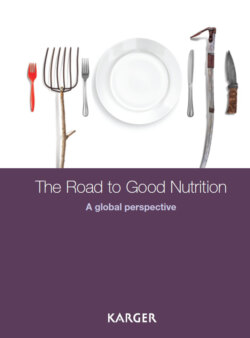Читать книгу The Road to Good Nutrition - Группа авторов - Страница 116
На сайте Литреса книга снята с продажи.
The causes of malnutrition are interconnected
ОглавлениеThe distinction between food security and nutrition security is critically important because it affects what can be expected from the large, and in some cases growing, investments in boosting agriculture productivity and promoting global food security worldwide. For example, investments to stimulate agriculture production, especially those focused on staple cereals, although necessary, may not automatically result in better nutrition if they are not accompanied by complementary investments to improve access to health services for the poor.
Food security has been defined by the Food and Agriculture Organization of the United Nations (FAO) as existing “when all people, at all times, [have] physical, social and economic access to sufficient, safe and nutritious food to meet their dietary needs and food preferences for an active and healthy life” (FAO 1996, par. 1). Importantly, this definition stipulates that food should be available in sufficient quantity as well as in sufficient quality, should be culturally acceptable, and should be available at all times throughout the year.
Nutrition security, by contrast, exists when, in addition to having access to a healthy and balanced diet, people also have access to adequate caregiving practices and to a safe and clean environment that allows them to stay healthy and utilize the foods they eat effectively. For young children, for example, this means that they have enough of the right foods, and this includes breast milk for up to two years of age, along with appropriate quantity and quality of complementary foods starting at six months of age because breast milk can no longer fulfill all of the infant’s nutrient needs after that age. In addition, young children also need caregivers who have the time, education, knowledge, physical and mental health, and nutritional well-being to care for them adequately. Adequate caregiving means that caregivers are able to attend to all their children’s multiple needs, including adequate feeding, hygiene, health-seeking practices and supportive parenting. Finally, to be nutrition secure, young children must also be free of repeated (chronic) or acute infections, which interfere with absorption and utilization of food and nutrients for body functions.
Thus borrowing from both definitions, “food and nutrition security”can be defined as a situation that exists when all people at all times have physical, social and economic access to food, which is consumed in sufficient quantity and quality to meet their dietary needs, requirements for growth and food preferences, and is supported by an environment of adequate sanitation, health services and caregiving (United Nations Food and Agriculture Committee on World Food Security). This allows for appropriate utilization of food and nutrients by the body and therefore creates the conditions for a healthy and active life. Nutrition security therefore implies an optimal nutritional status.
To put this in more concrete terms, a person who has access to even the healthiest diet would not be able to benefit fully from that diet if he or she were ill or were living in the unsanitary conditions that foster illness. Poverty is often associated with insufficient food or foods of poor quality, in addition to suboptimal (or lack of) water and sanitation facilities, and compounded by an absence of knowledge of how to prevent contamination in the handling and preparation of food - which further compromises adequate nutrition, even if diets are adequate. People living in such circumstances are therefore drawn into a vicious cycle of infection which manifests itself by repeated bouts of illnesses, leading to poor nutrition, which in turn exacerbates poor health and susceptibility to infections, and perpetuates poverty.
